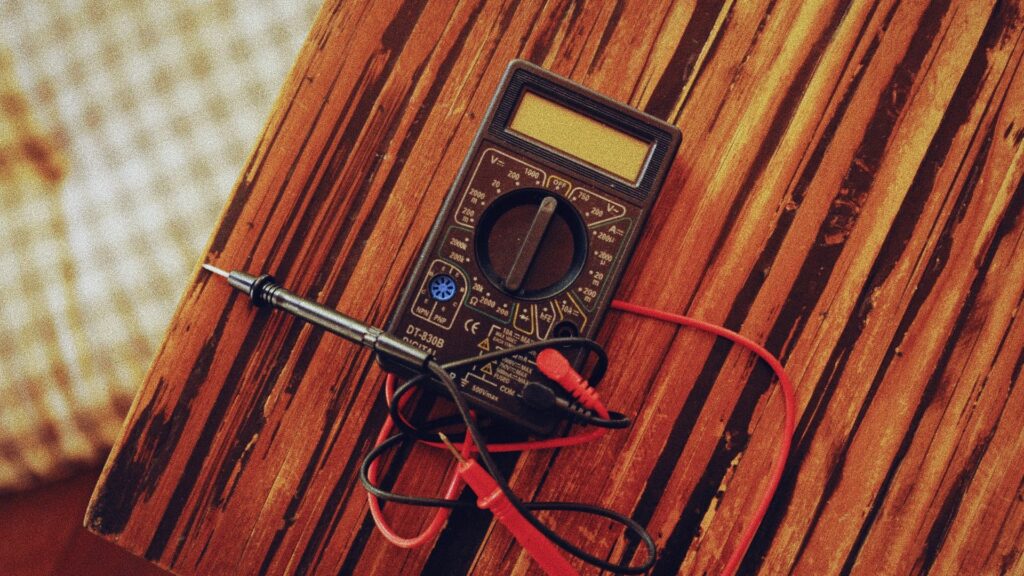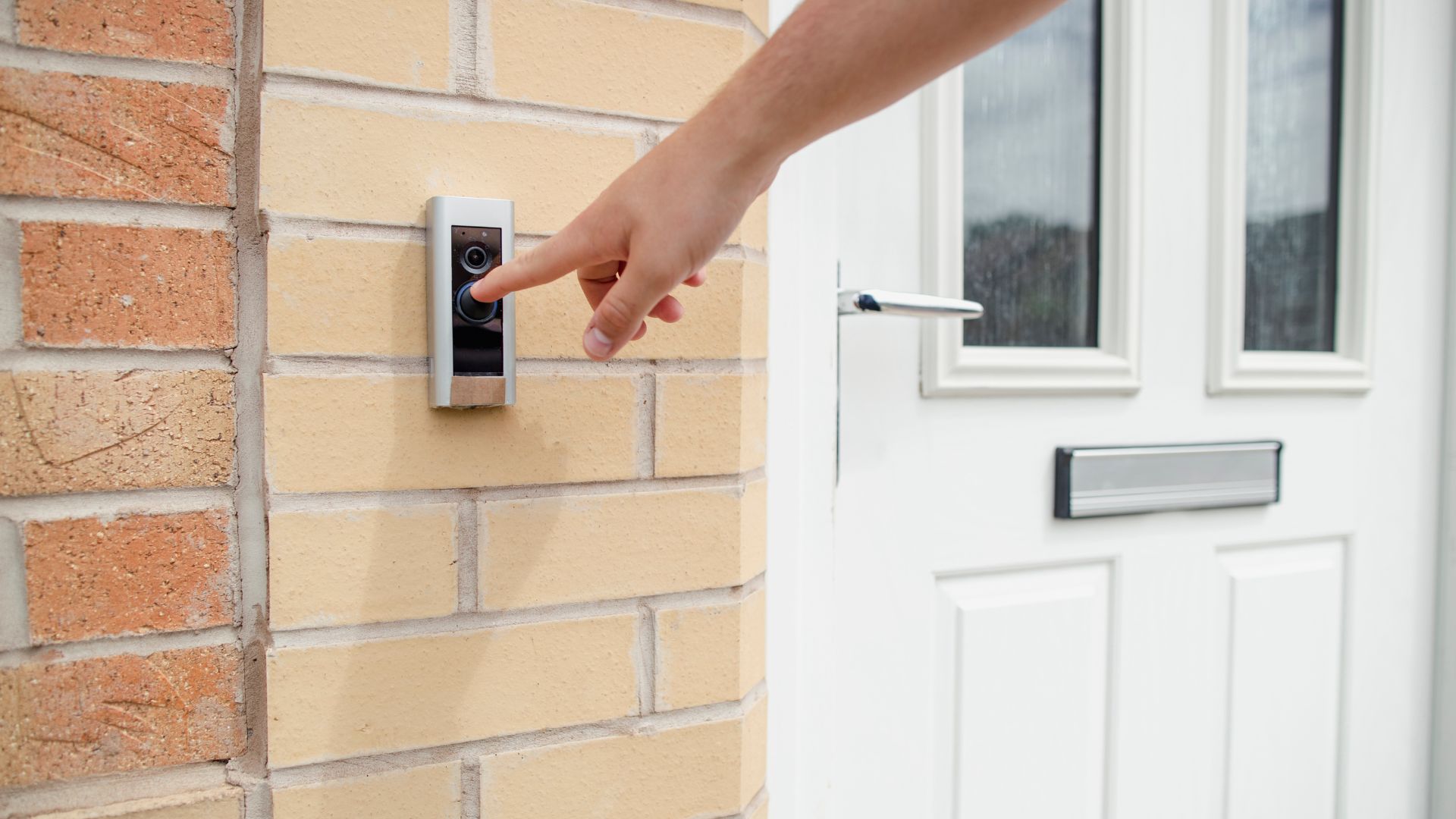Most doorbells use 16 volts. 24V is gaining popularity because you find sophisticated doorbells in large houses that require long wires. You need a higher voltage output to accommodate such configurations.
How Much Voltage Does A Ring Doorbell Need?
Ring doorbells use 16 – 24 volts. The ring-wired model can tolerate transformers with ratings as low as 10V. Ring doorbells have sophisticated features such as Wi-Fi and cameras. So naturally, they need more power. However, some of their models have higher energy requirements than others. That being said, most ring doorbells can work with a 16V transformer.
This question doesn’t matter if you hired a professional to install the ring doorbell. The technician will select the appropriate voltage. But if you prefer to install the device yourself, you should keep the following in mind:
1). Transformer
Have you ever stopped to wonder why voltage matters? Most American homes use 120 volts. Some houses have 240V because they use heavy-duty items that can’t survive on a 120V system. But you can’t connect your doorbell to a 120V or 240V system.
Doorbells are too delicate to withstand such power. This is where transformers enter the picture. According to Homesguide SFGATE, a transformer will lower the voltage to a level the doorbell can withstand.
The switch is the only component homeowners know because they constantly interact with it. They don’t realize that the switch can only perform its function because the transformer gives the doorbell the power it needs to ring when you press the button.
2). Keep The Age Of The House In Mind.
Many homeowners replace conventional doorbells with their ring counterparts without taking the transformer into account. This is acceptable if you have a modern home.
More than likely, you have a 16 to 24V transformer capable of serving the new ring doorbell’s needs. On the other hand, one-hour-smart-home has found that roughly 80 percent of all the homes constructed before 1995 have transformers with insufficient voltage.
They cannot meet a ring doorbell pro’s electrical demands. Therefore, if you have an older home, you should consider upgrading the transformer. Your 8 to 10V transformer is not enough.
3). Safety
If you’re thinking about installing a transformer with a higher voltage, you’re probably wondering whether the new transformer will introduce an electrocution hazard. However, this concern is unfounded.
Doorbells are low-duty devices. From what your-own-architect has seen, you need 30 volts or more to harm a person. Ring doorbells use 16 to 24 volts. Even though they connect to 120V and 240V systems, these devices are not a threat to you or your home’s inhabitants.
However, this is not an excuse to touch a doorbell’s live wire. You can perform repairs on an energized doorbell without suffering serious harm. But this behavior is discouraged. You should always take precautions while interacting with an energized device, regardless of the voltage. That includes using insulated tools and wearing rubber gloves.
Why Voltage Matters For A Ring Doorbell? Won’t Ring Doorbell Work If Voltage Is Too High/Low?
The wrong voltage can interfere with a ring doorbell’s functions. Don’t be surprised if the device stops working altogether. You can also damage the doorbell’s sensitive components.
Ring doorbells can work with higher voltages (so long as you stay within reason). But low voltage will present a challenge. Your doorbell will manifest various symptoms, for instance:
- The doorbell will shut down continuously for no apparent reason.
- The bell’s connection to the Wi-Fi network will deteriorate.
- The camera and night vision won’t work.
- The motion detection feature won’t work as expected.
- The doorbell will freeze occasionally.
- Either the doorbell doesn’t ring, or the volume is low.
If you gave the ring doorbell sufficient voltage, but it continues to manifest concerning symptoms, consider the wire length. Longer wires require a higher voltage, especially if they accommodate multiple doorbells. You can use transformers with a lower voltage for wires with shorter runs.
How Do I Know What Voltage My Ring Doorbell Is?
If you want to buy a new transformer, your retailer will recommend a voltage based on the ring doorbell you wish to install. But if you already have a transformer and you want to know whether it can accommodate your doorbell, use these steps to find the voltage:
- Multimeter

Remove your old doorbell and measure the voltage across the terminals using a multimeter. Look for a 16 – 24V rating. Otherwise, the transformer may not support the ring doorbell.
- Visual Inspection
Some manufacturers will print the voltage on the transformer. Inspect the device carefully. You should also search for the amperage. The voltage and amperage are equally important.
- Documentation
Check the device’s documentation. It will tell you the transformer’s voltage and amperage. Sometimes, the manufacturer puts this information on the packaging.
Once you know the voltage, you can determine whether or not it meets the ring doorbell’s requirements. This means checking the ring doorbell’s manual to identify its voltage requirements.
You can’t proceed until you know the voltage the doorbell uses. Some people prefer to take a trial-and-error approach. This is where they install the doorbell and then wait to see what happens. If the doorbell works, the voltage is sufficient. If the doorbell doesn’t work, the voltage is not enough.
Ring doorbells are sophisticated enough to alert you when they don’t have enough power. Go to the settings to find this information.
If you need help finding the old transformer to check its voltage, check the basement, attic, crawl spaces, garage, and utility room, to mention but a few.
Can I Change The Voltage On My Ring Doorbell?
If the voltage is insufficient, replace the transformer. Doorbell transformers are easy to find. Make sure you install the doorbell and its transformer according to the manufacturer’s instructions. They won’t compensate you if the transformer blows because of a mistake you made. Transformers can blow for various reasons, including:
1). A short circuit can wreak havoc on your devices. If you don’t have the relevant skills or experience, hire an expert to look for shorted wires. The technician can also inspect the switch and chime.
2). An overload on the circuit can overwhelm the transformer. An overloaded transformer can overheat, and overheating can lead to fires. Some of the biggest house fires start from small low-duty devices. Don’t underestimate the destructive capabilities of a ring doorbell transformer.
3). Do you have a defective transformer on your hands? Look for burn marks. Some transformers sustain damage after you install them. Others have factory defects. A technician will fix the transformer or encourage you to buy a replacement.
You should only tamper with the transformer if you don’t have a warranty. Otherwise, you should use the warranty to get cheap repairs. Some manufacturers will reject your claim if they learn that an outsider tampered with their transformer.
4). Is the incoming voltage within the recommended range? Technicians are advantageous because you can trust them to select the correct doorbell and transformer. They can also install these devices without making the mistakes that lead to short circuits.
Related post:


My ring doorbell stopped working. I checked the chime and it was humming and hot. disconnected wires. Voltage is 27 at wires at the chime. Also 27 at the transformer. I would appreciate your opinion. Thank you, John M
John,
It sounds like you’ve taken some initial steps to troubleshoot the issue with your Ring doorbell. The humming and heat at the chime indicate there might be an excessive load or a short circuit somewhere in the system.
Thanks,
Stellar